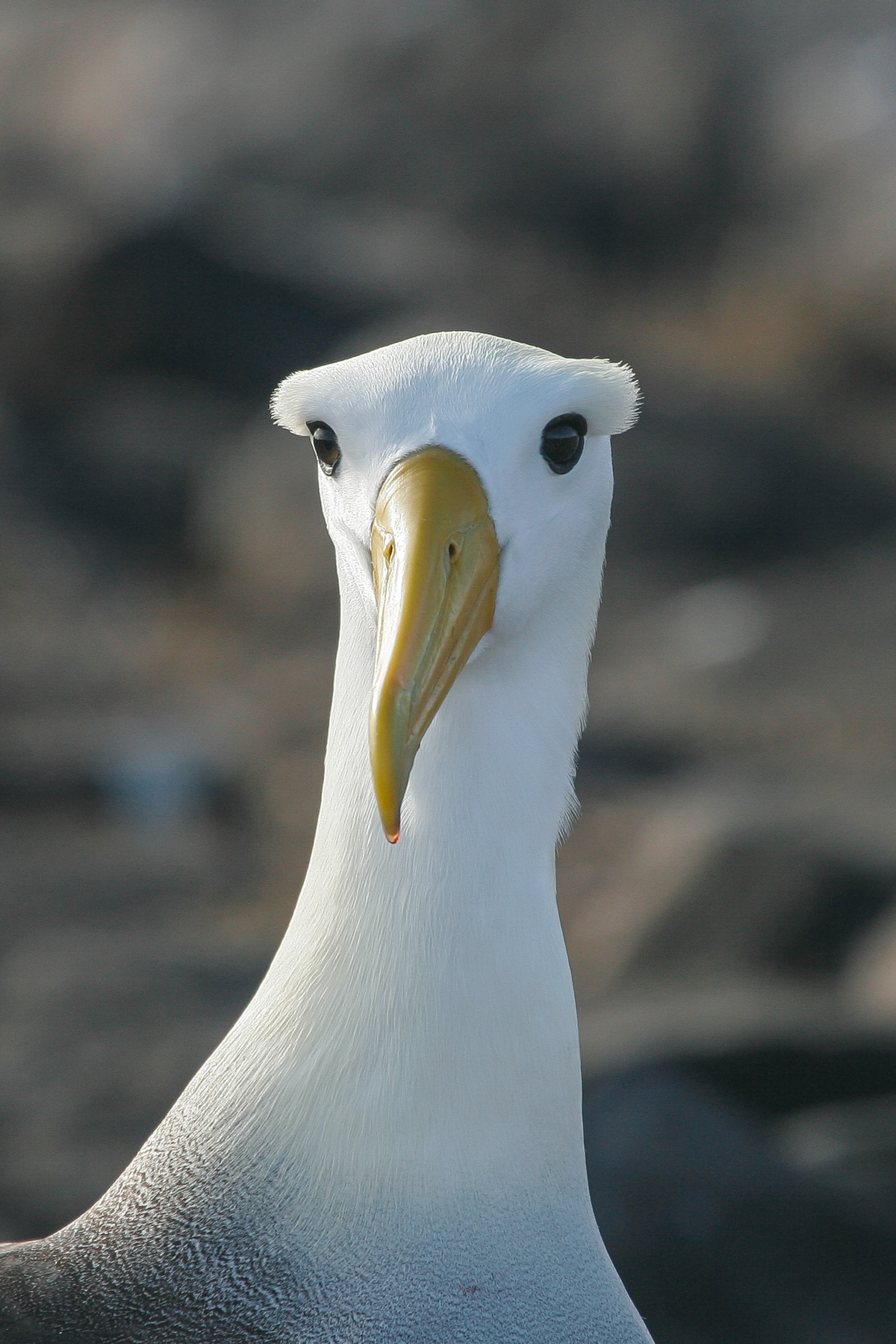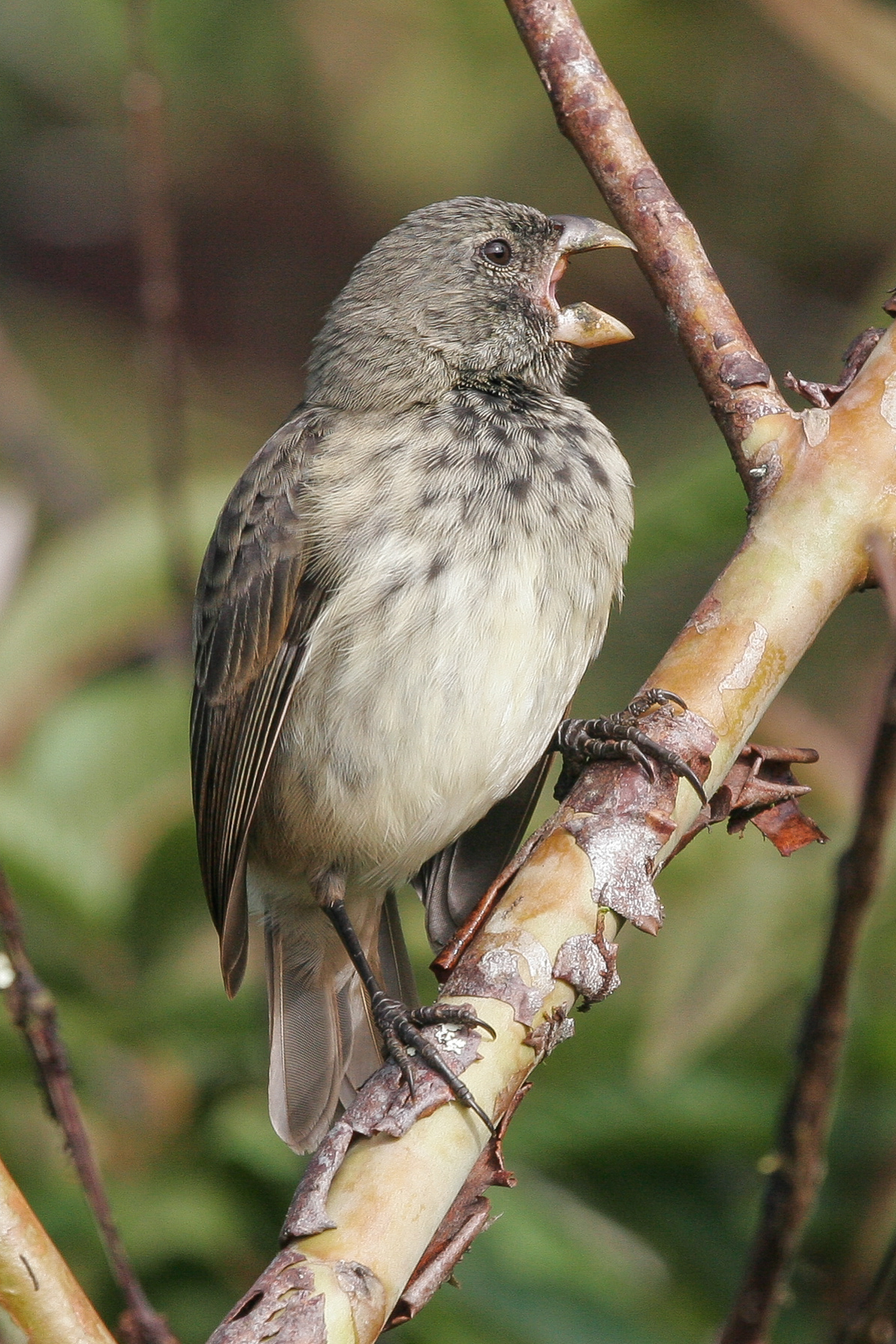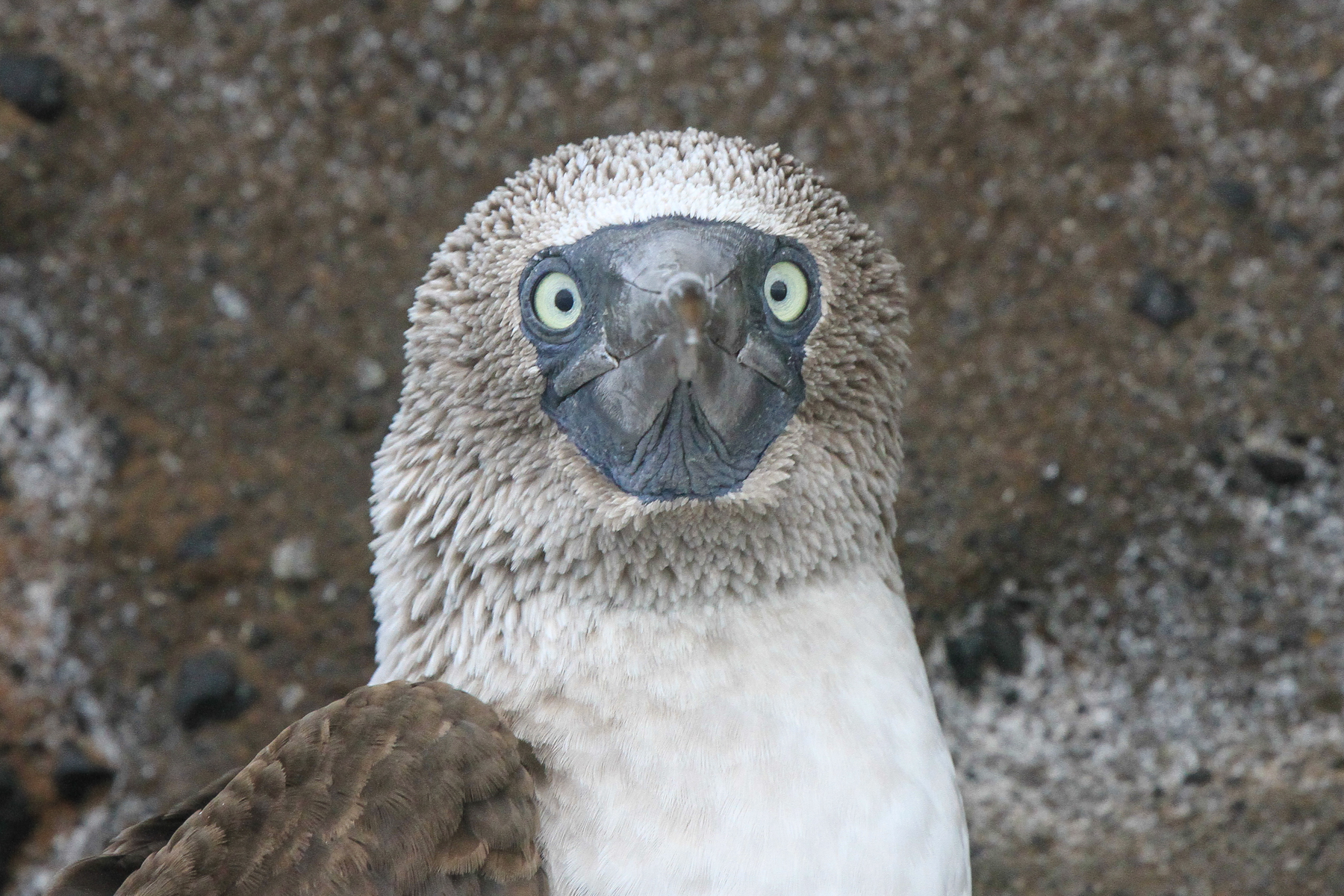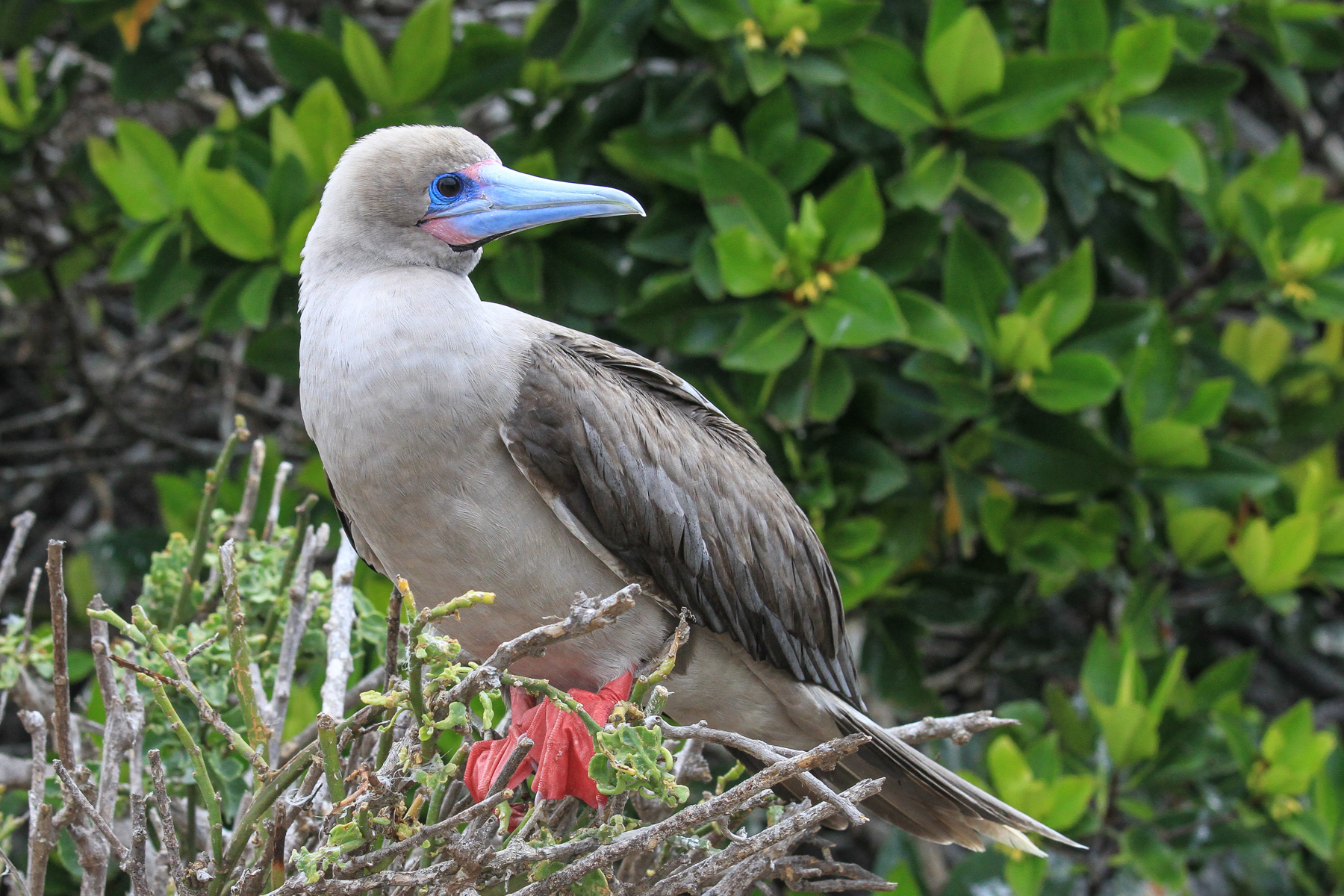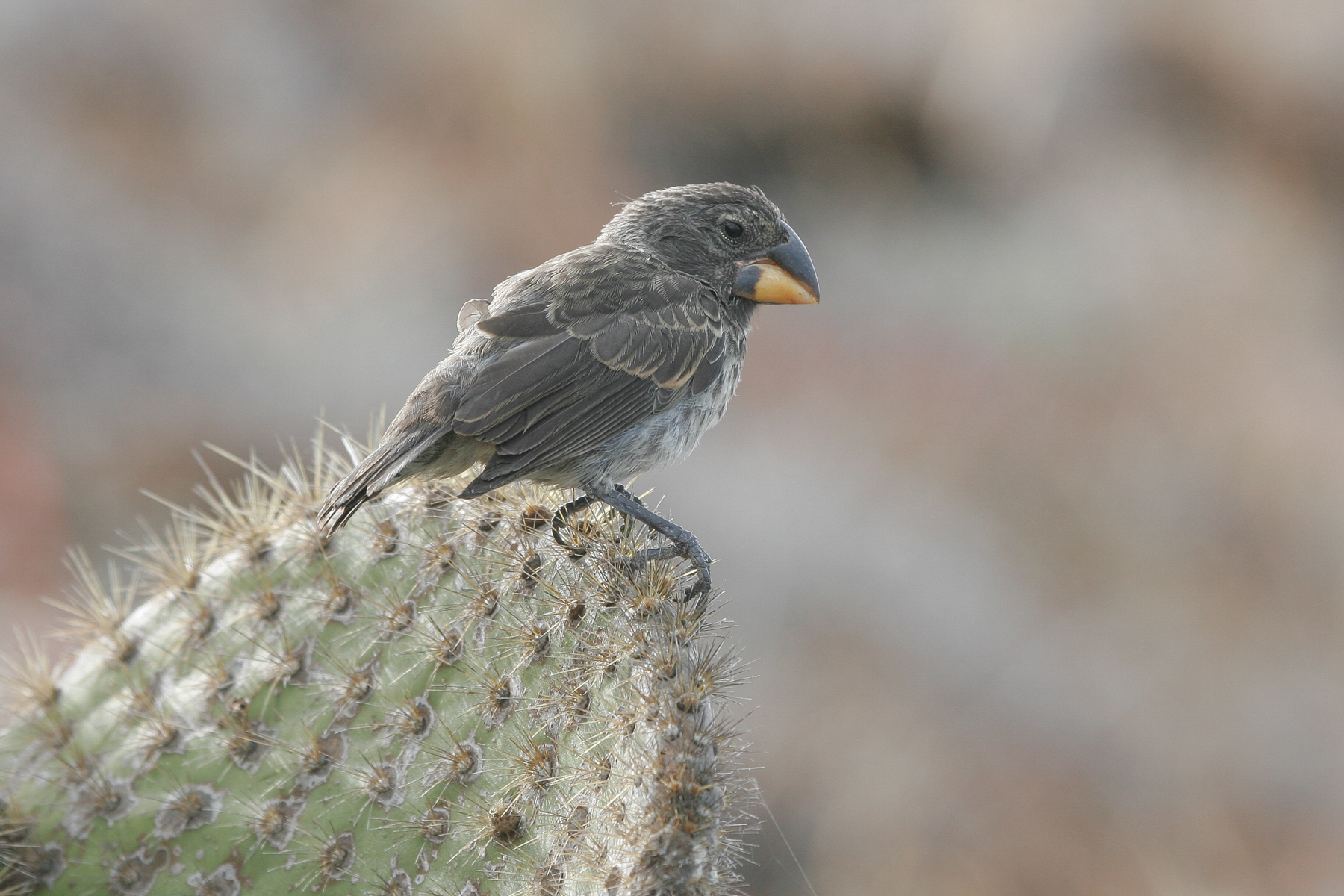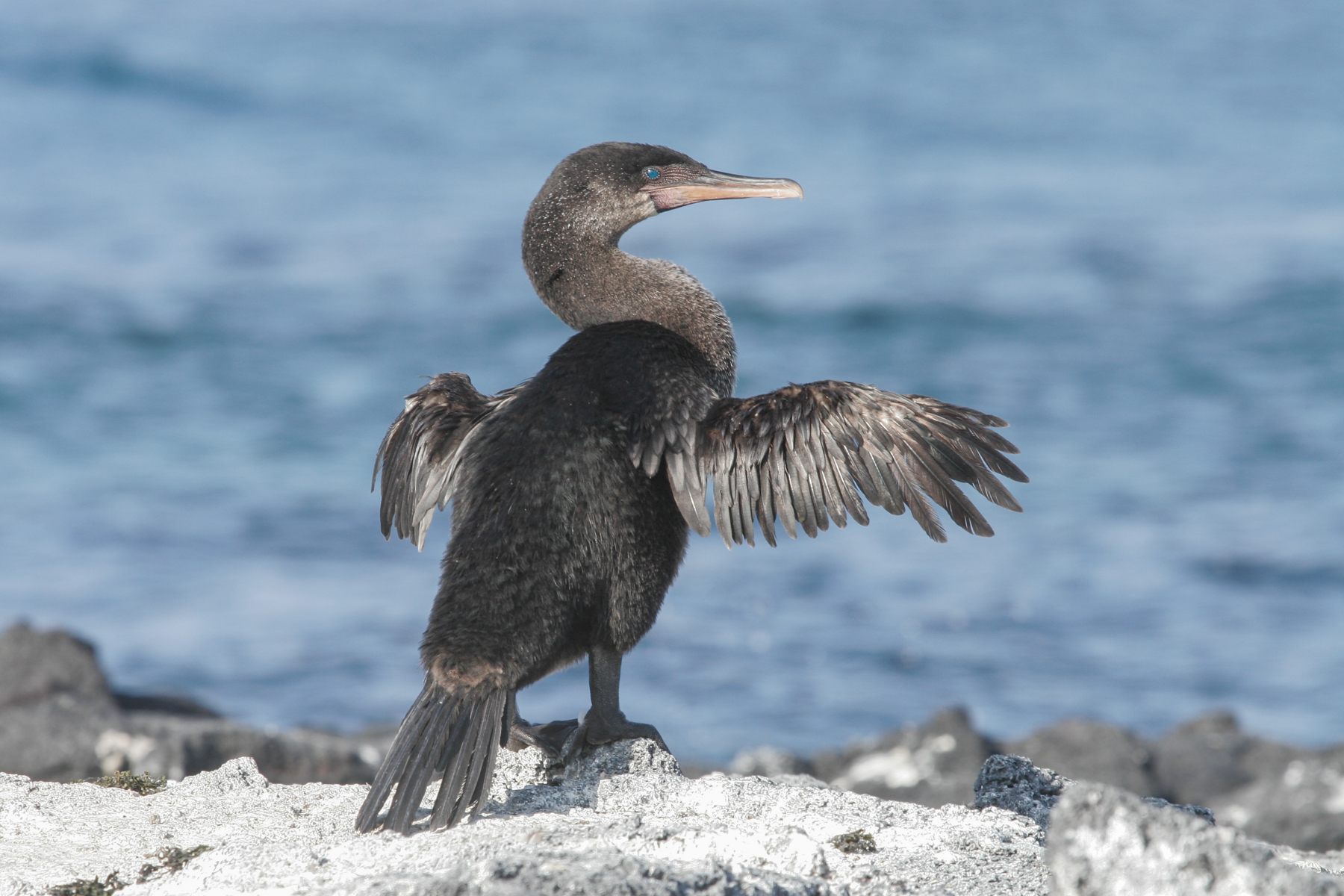GALAPAGOS BIRDING TOUR: DETAILED ITINERARY
Galapagos: Day 1 Our Galapagos birding and wildlife tour begins in the early evening at Quito, the capital of Ecuador, where we will stay overnight. Airport transfers will be provided.
Galapagos: Day 2 This morning we will take a flight to the island of Baltra (which lies just off the northern coast of the much larger island of Santa Cruz (or Indefatigable: most islands in the Galapagos having both Spanish and English names). Here we will board Nemo III, our home for the next seven nights. During this period we shall cruise amongst the ‘Islas Encantadas’ or ‘Enchanted Islands’ as the Galapagos are known, for much of the time leaving the inhabited and greatly transformed larger islands behind and exploring the natural paradise that still survives on the smaller islands. Much of our travelling will be done at night to maximize time ashore, but even daylight hours at sea are not wasted as we can enjoy encounters with pelagic seabirds such as the critically endangered Galapagos Petrel, which breeds in just a few colonies in the highlands of the Galapagos, and cetaceans such as Bryde’s Whale and Common Bottle-nosed Dolphin.
This afternoon we will probably make our first landing at nearby Seymour (or North Seymour), a small island that epitomizes the abundance and fearlessness of the local wildlife. Within minutes of landing, we shall be stepping over and around nesting Blue-footed Boobies. Whilst we have to adhere to designated footpaths to minimize damage to the environment, the boobies know no such rules and are content to raise their comical looking chicks in the centre of the main thoroughfare. In low Cryptocarpus (saltbush), both Magnificent and Great Frigatebirds nest at eye-level and within arm’s reach. Here we should be able to enjoy watching and photographing the spectacle of the males waggling their grossly inflated red throat pouches and see the ungainly young on the tiny stick nests awaiting the next instalment of fish stolen by their parents from the hapless boobies. We should also come across some large and impressive Land Iguanas.
A long stretch of boulder beach is home to dozens of Galapagos Sealions, an immensely appealing and photogenic animal that we will encounter many times during our cruise and surely have some close encounters with. Here, if sea conditions are suitable, we can watch them body-surfing through crashing, sunlit rollers. We should also find some Galapagos Fur Seals trying to shelter from the sun. With a total Galapagos population close to that of the sealions, they are much more shy and less often encountered, possibly because of the slaughter of tens of thousands in the past for the fur trade.
Rubbing shoulders with the seals will be a small number of endemic Lava Gulls. This is possibly the rarest gull in the world, numbering just 300-400 pairs. The intertidal zone is also a good place for the endemic Lava Heron and Yellow-crowned Night Heron, both feeding on the abundant, brilliant red Sally Lightfoot Crabs.
Elliot’s Storm Petrel is a common inshore species in Galapagos, and we may well find a group pottering right around our yacht, but surprisingly its nesting locations in the islands have never been found. We are also likely to see the breeding-endemic Galapagos Shearwater (split from Audubon’s), which nests in the coastal cliffs. Other new birds today are likely to include Brown Pelican and the endemic Small Ground Finch.
This evening we will set sail for one of the most remote islands in Galapagos, and surely their ultimate seabird colony, Genovesa (or Tower).
Galapagos: Days 3-8 We shall spend this period cruising the Galapagos Islands. (The order in which the islands are visited may have to change, to comply with Galapagos National Park requirements.)
Genovesa (or Tower) is magnificent and remote, and every inch seems covered with birds. Many Galapagos cruises miss it out, yet it offers some unique creatures and experiences and is one of the two best islands in the entire Galapagos for photography.
During our exploration of Tower, we shall be sure to visit El Barranco, which is reached via Prince Philip’s Steps, named after the Duke of Edinburgh following his visit to Genovesa. Here Nazca Boobies nest in fair numbers (including right on the path we must follow), whilst Red-billed Tropicbirds prefer the narrower ledges along the cliffs which they share with exquisite Swallow-tailed Gulls, virtually a Galapagos breeding endemic (a few nest on tiny Malpelo island off Colombia) and possibly the most beautiful gull in the world. Another attraction here is the vast colony, numbered in tens of thousands of pairs, of Band-rumped (or Madeiran) and Wedge-rumped Storm Petrels. The latter species is unusual in being active at the colony by day, and the air is full of these tiny whirring seabirds weaving in and out on their way to and from their nest holes, and occasionally falling prey to the Galapagos form of the Short-eared Owl.
On landing at Darwin Bay, we step ashore on a white coral beach to find a mass of nesting Red-footed Boobies – one of the main reasons for our visit. This species, most of which are of the brown phase in the Galapagos, nests only on the outermost islands and is unusual for a booby in that it nests in low trees and shrubbery. Amongst these absurdly confiding birds, which we can approach and photograph at extremely close range, nest good numbers of Great Frigatebirds.
The prime landbird specialities here are the endemic Genovesa Ground Finch and the endemic Genovesa Cactus Finch, both confined to Genovesa. The Darwin’s finches are a complex and unique group (with all but one species endemic to the Galapagos archipelago), perfectly illustrating adaptive radiation. On Genovesa the Genovesa Ground Finch and Genovesa Cactus Finch share the limited resources with Large Ground Finch and Grey (or Dusky) Warbler-Finch. The Genovesa Cactus Finch has evolved a bill midway between the huge, parrot-like bill of the Large Ground Finch and the slim bill of the other two species.
There are no such identification problems with the ever-present Mangrove Warbler and the endemic Galapagos Dove, both of which are very tame and make attractive photographic subjects.
After we leave Genovesa we should encounter both Band-rumped Storm Petrels and Galapagos Shearwaters out at sea.
Along the spectacular west coast of Isabela (or Albemarle) a series of volcanic peaks tower up to 1707m (5601ft) above this largest of the Galapagos islands. At Punta Vicente Roca, at the northwestern tip of Isabela, nesting Brown Noddies are abundant on the impressive tuff (volcanic ash) cliffs, their smoky brown plumage well camouflaged against the rock, and endemic Galapagos Penguins hide in the recesses.
The coastal mangroves of Isabela hold almost all of the remaining population of the very localized and declining endemic Mangrove Finch (the population on Fernandina is thought to have become extinct, but reintroduction is being attempted). The park authorities nowadays only rarely allow visits to the best remaining sites for this species, to prevent disturbance to this critically-endangered bird, but we will request permission and we could get lucky!
We will likely visit one or more areas on the western coast of Isabela. At Tagus Cove, one can see a natural harbour with ancient graffiti from ships’ crews dating back to 1836. A walk here to a tuff cone will turn up various finches and other landbirds. There is even a fair chance of seeing the uncommon endemic Galapagos Martin.
Isabela is dominated by a chain of huge volcanos that rise to 1660m (5446ft) above sea-level. We will drive by ‘truck-bus’ (a truck converted to carry passengers) from Puerto Villamil up to the end of the road on the slopes of Volcán Sierra Negra (or Santo Tomás) and then walk up to the rim of the immense crater for spectacular views over this dramatic island. Reaching 1490m (4889ft), Sierra Negra is the second-highest of the five huge volcanic cones that dominate Isabela, and in particular, is a good spot for the rather elusive Galapagos Martin and the uncommon Vegetarian Finch. Other birds we are likely to encounter include endemics such as Galapagos Hawk, Large-billed Flycatcher, the rare and declining Darwin’s Flycatcher (formerly lumped in Vermilion Flycatcher), Galapagos Mockingbird, Medium and Small Ground Finches, Large Tree Finch, Woodpecker Finch and Green (or Olive) Warbler Finch, as well as Dark-billed Cuckoo. We will also have our first chance here for the delightful little endemic Galapagos Rail, which is sometimes quite unconcerned by its huge admirers, making a very close approach.
Fernandina (or Narborough) is one of the most recently active volcanic areas of the Galapagos and also one of the most magical islands. This afternoon we will land at Punta Espinosa. Areas of bare lava are just beginning to be colonized by the first intrepid plant species such as the Brachycereus cactus. Where the lava reaches the sea there are some of the most impressive and photogenic gatherings of Marine Iguanas in the Galapagos. Hundreds of them lie motionless, basking in the sunshine, with just the odd snort as they sneeze away excess salt through their nostrils. Some are scattered across the flat, rocky platform while others are packed together in an intertwined mass. In this area, we can also expect stunning, close-up encounters with endemic Flightless Cormorants. With the world population of less than 1000 individuals confined to this northwestern part of the Galapagos, it is one of the world’s rarest seabirds. The Galapagos Penguin, which occurs here in some numbers, is yet another Galapagos bird with a claim to fame, being the most northerly penguin in the world. The tidal pools often attract Green Turtles, while along the shoreline we may find shorebirds such as American Oystercatcher, Semipalmated Plover, Wandering Tattler and Ruddy Turnstone.
At Floreana (or Charles), the Floreana (or Charles) Mockingbird is now confined to the tiny offshore islets of Gardner and Champion, where this critically endangered species can be observed quite closely from a zodiac cruise early this morning (as landings are not permitted). Afterwards, we can enjoy some superb snorkelling.
At Punta Cormorant we can visit a mangrove-fringed lagoon where a number of impossibly pink American Flamingos and White-cheeked Pintails should be present, along with waders such as Least and Spotted Sandpipers and Black-necked Stilt.
Floreana has a fascinating and intriguing human history including numerous attempts by colourful characters to settle the island, mysterious disappearances and unsolved murders! During the afternoon we will go ashore at the settlement and travel by ‘truck-bus’ into the comparatively luxuriant highlands. Here we should encounter Medium Tree Finch, which is only found in the higher parts of this one island. We will also be able to see the primitive cave dwellings used by the first settlers on the island.
Española (or Hood) is the most southeasterly island of the archipelago. By this time, many of us will be assessing which has been our favourite island or most memorable experience – wait until Española before making any decisions!
At this low-lying island some 15 kilometres (9 miles) long and uninhabited, we shall be greeted at Gardner Bay by the customary palaver of honking sealions, but amongst them are the distinctively heavy-billed Española (or Hood) Mockingbirds, phenomenally inquisitive, running up to peck at loose shoe-laces and discarded rucksacks.
Our visit to Española will reach its climax at fabulous Punta Suarez. Here can be found the huge-billed Española Ground Finch (confined to this one island), the largest of the endemic lava lizards and some particularly fine examples of Marine Iguanas with a bright reddish hue to the sides of their bodies. The Galapagos Hawks here are remarkably tame as they have never been persecuted, unlike the situation on the inhabited islands.
A real highlight of our Galapagos birding & wildlife tour will be that most special of all the Galapagos seabirds, the Waved Albatross (which breeds only here and, in much smaller numbers, on Isla de la Plata off the coast of Ecuador). At this time of year, many of the adults will be incubating, but some will still be displaying as they greet each other when their partner returns from a feeding trip and they switch places. Watching them point their bills skywards while stretching out their long wings and making their strange wailing cries is an experience one never forgets. Ungainly on land, once these leviathans have waddled rapidly across the rocks and taken to the air they become transformed into huge but graceful creatures that ride the updrafts along the cliffs.
This fantastic island also has some spectacular mixed colonies of Blue-footed and Nazca Boobies, Red-billed Tropicbirds and Swallow-tailed Gulls. Offshore, we can often get quite close to rafting albatrosses.
San Cristóbal (or Chatham) is the most easterly of the Galapagos islands. This morning we will be off Punta Pitt at sunrise. We will go ashore and head inland to look for the endangered endemic San Cristobal (or Chatham) Mockingbird, found only on this one island. We should also see a small colony of Red-footed Boobies, probably the first we will have encountered since our visit to Genovesa. If sea conditions permit, we will also make a zodiac cruise to Pitt Rock to enjoy the fantastic number of nesting seabirds.
We will then navigate down the west side of San Cristóbal to make a landing at Cerro Brujo where there is a dramatic, eroded volcanic tuff cone. This was one of the first places visited by Charles Darwin, as he explored the islands on the Beagle, and the beach and lagoon here hold Brown Pelicans and a variety of shorebirds, not to mention many Red Ghost Crabs. Finally, we will visit Kicker Rock (or Leon Dormicida, ‘Sleeping Lion’), just in time to admire and photograph this extraordinary and spectacular cleft pinnacle in the late afternoon light. Band-rumped Storm-Petrels and Bryde’s Whales are regularly seen in this area.
Galapagos: Day 9 This morning we return to Baltra, where we say goodbye to our boat and crew before taking the airport bus the short distance to the narrow channel that divides Baltra island from the much larger Santa Cruz Island, one of only three inhabited islands in the Galapagos. After a short ferry ride, we will board our private vehicle for the transfer to Puerto Ayora, where we will stay overnight in a comfortable hotel.
En route, we will explore the highlands of Santa Cruz. We will certainly want to visit Los Gemellos, where some enormous sinkholes in the limestone rocks are surrounded by beautiful forest that holds some exciting endemics, including Large-billed Flycatcher, Galapagos Mockingbird, Medium Ground Finch, Large and Small Tree Finches, Green (or Olive) Warbler-Finch and the famous Woodpecker Finch. We may also find Dark-billed Cuckoo.
We will also have the opportunity to search for Giant Tortoises. Formerly common and widespread on many islands in the Galapagos, they are now either extinct or scarce. Tens of thousands were taken up to the 19th century by passing mariners. Stored live in ships’ holds for months with no food and water, they provided a ready source of fresh food and were also used as ballast! We shall visit a reserve area set aside for these prehistoric, painfully slow and cumbersome relics. At a marshy pool, where the tortoises often come to cool off, we will also keep a lookout for Paint-billed Crake (a recent colonist from the mainland) and both Common and Purple Gallinules.
Another interesting bird on Santa Cruz is the endemic Galapagos form of the American Barn Owl, and we will have further chances here to encounter Galapagos Rail and Galapagos Martin. In addition, we are likely to come across Western Cattle Egret and Smooth-billed Ani.
Galapagos: Day 10 After some final exploration on Santa Cruz we will return to Baltra airport and take a flight to Quito for an overnight stay.
[Note on flights from the Galapagos. Flight timings change regularly and delays are commonplace. Do not make any plans to leave Quito today.]
Galapagos: Day 11 Our Galapagos birding and wildlife tour ends this morning at Quito. Airport transfers will be provided.









